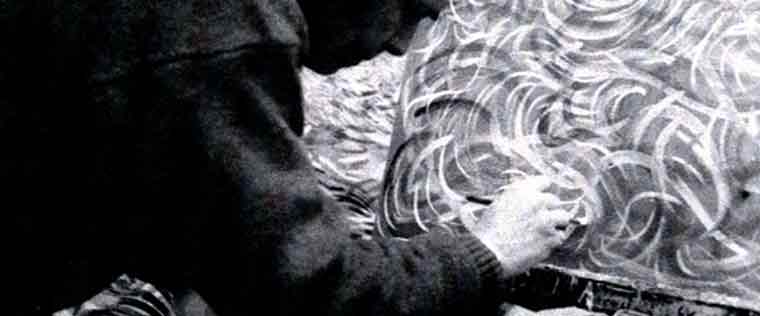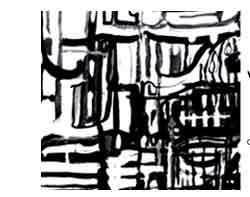 |
||
After looking intensivly towards American hyper realism, a big turning point in his work came in 1986, the year of his first journey to India. This intense encounter with its spiritual and artistic reality lead to unexpected and unpredictable pictorial revelations and fundamental changes in both his painting and personal life. Those lights and colors prompted a him to revolutionize his concept of painting. "the form was an old vehicle - a mechanism, color was what i had to concentrate on in order to express what was deep inside of me" This is the explanation for a new pictorial consciousness, concepts not limited to expression for its own sake, but as a tool to communicate the spiritual reality both in and around us. A liberation from the academic rules (lovingly learned and still respected) towards a deeper understanding of the potential power of an image. An explanation as to why this change occured is because Claudio Lasagni has always been exclusively loyal to his spirit- to the concept behind a work of art. In his work, instead of ephemeral rational, he has always expressed an interior state of mind in a fresh and personal manner, a manner which evades diatribes on abstraction and figuration. Whether making a figurative or tonal painting the content is poetic: the paintings aere technically and structurally transformed into poetry because of Lasagni's need to express, as intimately and as truthfully as possible, his own state of being. Here is a man and an artist who knew how to start an new and a more intense spiritual research to explode anew his aspirations and hopes. The aspirations and hopes that won't succumb to a conformist post-modern society that has all but forgotten the transcendental view. To Claudio Lasagni, painting is a sort of pilgrimage of the absolute - an esthetic penetration into the stream of mystery which surrounds everyone and by which Mr. Lasagni feels immersed. In this context, painting is conceived not as forced research but as abandonment; an abandonment in which the artist is transparent and thus enabled to channel and embrace the truth consistently and with beauty. (Therefore, everything follows an interior rhythm which, if lost, renders it difficult to direct the dance of the brush. For this reason, the symbiosis of painting and music has become progressivly inevitable. Guided by his passion for Inddian classical music and the fact that the study of ragas (a word which indicates melody or musical composition but literally means "the act of coloring or painting"), we realize in Lasagni's work, that the rhythm they emit is an existential flow of vital pulses that form a musical progression. The music inspires and more that dictates a progression of symbols and colors that, in and of themselves, suggest an obedience to a higher order. The symbol does not come to life through a pre-determined authoritarian choice but rather is looked for and discovered intuitively; before becoming a symbol it has metamorphosized from a figure or a form, an image or a word; before becoming a color it has been music, a vibration. This painting does not evolve from progressive and dliberate elimination but from the concentration of meaning. Consequently, Claudio Lasagni tends to define each sign with a brush stroke, likened to a 'sword stroke' able to arouse with clarity a transparent concept of reality. Concurrently, we find evidence of extraordinary technical control gleaned from the intense study of Byzantine icons and Chinese painting. The artist utilizes a background color field to emphasize the depth of his subjects as reflected in their own light, hue and graphic symbology - a kind of spiritual alphabet. The forms do not constitute the end of an intellectual planning process, an abstract architectonic projection, but rather they are themselves; their growth and discourse lies within the painting surface and creates their own space and searches for a dimension in which their very essence is revealed. They are presented and co-habitate in conjunction with each other; they are not proportionally commesurate to some centrally calibrated space but allude to their own dynamism and the continuous ramifications which define the space/place relationship that generates outwards toward their boundries. Movement which follows the principles of frequency and continuity to reach that essential space, where we find ourselves peeling away the extraneous layers of our very existence. |
||
 |
